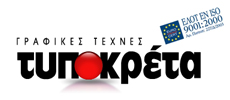Prefectures of Crete
Chania Prefecture
Municipality of ChaniaMunicipality of ApokoronasMunicipality of PlataniasMunicipality of KissamosMunicipality of Kandanos - SelinosMunicipality of GavdosMunicipality of Sfakia
Rethymnon Prefecture
Municipality of RethymnonMunicipality of MylopotamosMunicipality of AmariMunicipality of Agios VasiliosMunicipality of Anogia
Heraklion Prefecture
Municipality of HeraklionMunicipality of MaleviziMunicipality of Archanon - AsterousionMunicipality of FestosMunicipality of GortynaMunicipality of ChersonissosMunicipality of Minoa PediadosMunicipality of Viannos
Lassithi Prefecture
Municipality of MirampeloMunicipality of SitiaMunicipality of IerapetraMunicipality of Oropedio
Fauna - Flora
Fauna
Such of the same facts can be applied to the fauna as to the flora, since the development of the fauna depends on environmental factors as well as altitude and temperature.
Therefore, we shall classify the animals and the birds, which have their habitat in Crete and more precisely in the prefecture of Rethymno, according to the zones of altitude. In the coastal area and primarily on the rocky shores the famous sea gull nests as well as the falcon (Falco eleonore), which comes from Africa to Crete during the summer months. Furthermore the well-known sea turtle caretta caretta lays its eggs on the sandy beaches. In the area of flat land, that is, in the valleys and on low hills, you can find hares, weasels, badgers, hedgehogs, voles (Apodeus sylvaticus-creticus) and bats as well as birds such as sparrows (Passer domesticus), goldfinches (Carduelis carduelis), swallows (Delichon urbica), carrion crows (Corvus corone), linnets (Fringila coelembs) and many others.
The same species of animals and birds can also be found in the semi-mountainous area, as well as certain species of predatory birds such as the crow (Corvus corax) and the blackbird (Turbus merula).
However, the realm of all predatory birds such as the harrier eagle (Gypaetus barbatus) and all the other above-mentioned species is the mountainous area. There, the Cretan wild goat (Capra aegagrus) and the Cretan wild cat (Felix silvestris), which are both in danger of extinction, have their habitat.
Flora
As well as trees and plants, which can also be found in other regions of Greece and the wider Mediterranean area, there are a large number of plants endemic to the island. This can be explained by the geological isolation of the island, which has facilitated the development of local species since ancient times.
Out of an estimated number of 2000 species of plants 160 are endemic and grow exclusively on the island. Unfortunately, compared to periods of the past, the vegetation of today has been diminished to a large degree. Mountains which previously had lush vegetation such as Psiloritis and Ida (which was planted with trees) are today almost bare mainly due to uncontrolled pasturing of sheep and goats, and fire.
At the same time the few areas of flat land had to be used for agricultural farming, and in some coastal areas green-houses were built with the result that the flora and fauna has been restricted to a large degree and many rare species of plants today are in danger of extinction.
Since the development of the flora depends on the temperature and the morphology of the terrain, its classification is based on altitude, which influences the above-mentioned factors.
Thus in the coastal area humidity and the salty air of the sea favour plants such as the sea lily (Pancratium maritimum) the tamarisks (Tamarix cretica) and the famous Cretan palm (Phoenix theofrastii).
In the area of flat land, which goes up to a height of 300 m, the Mediterranean macchie can be found including lentisk (Pistacia lentiscus), holm-oak (Quercus coccifera), oleander (Nerium oleander), Vitex agnus-castus, camomile (Chamomilla recutita), mint (Mentha spicata), myrtle (Myrtus communis), heather (Erica), Daucus carota, wild celery (Smyrnium), hollyhock (Alcea pallida cretica), the common poppy (Papaver rhoeas), Cistus incanus-creticus, as well as Cretan ebony (Ebenus cretica).
The semi-mountainous area goes up to a height of 800m approximately and includes shrubbery such as the holm-oak (Quercus coccifera), the lentisk (Pistacia lentiscus), thyme (Thymus capitatus), the Arbutus unedo, the Phlomis cretica, the maple-tree (Acer sempervirens), the bryony (Bryonia cretica), the Spartium junceum, the Styrax officinalis, and many others. Wild flowers include Cretan cyclamen (Cyclamen creticum), iris (Iris cretica), Dracungulus, gladiola (Gladiolus italicus), tulips (Tulipa orphanidea), hyacinth (Muscari commosum), various species of Cretan orchids as well as locust-trees (Ceratonia siliqua) and oak-trees (Quercus).
The area between 800 and 1800 m of height is known as the mountainous area. Here we meet holm-oaks (Quercus coccifera), the Cretan maple-tree (Acer sempervirens) as well as shrubs and wildflowers such as yellow violets (Erysimum creticum), tulips (Tulipa cretica), wild Cretan wormwood (Achillia cretica), wild violets (Viola cretica), crocuses (Crocus oreocreticus) and many others.
Of particular interest is the flora of the gorges, which reveals a splendid array of wild flowers and shrubs, many of which are rare species and endemic to the island. They have been preserved from human intervention, because access to this area is difficult and therefore the environment has maintained its original wildness.
Here you can see the entire spectrum of species referred to in the above-mentioned areas, since the gorges start in the mountainous and semi-mountainous area and end up at sea level. Furthermore, if you are lucky, you might also come across the famous Cretan Diktamo (Origanum dictamus).



 ENGLISH
ENGLISH







